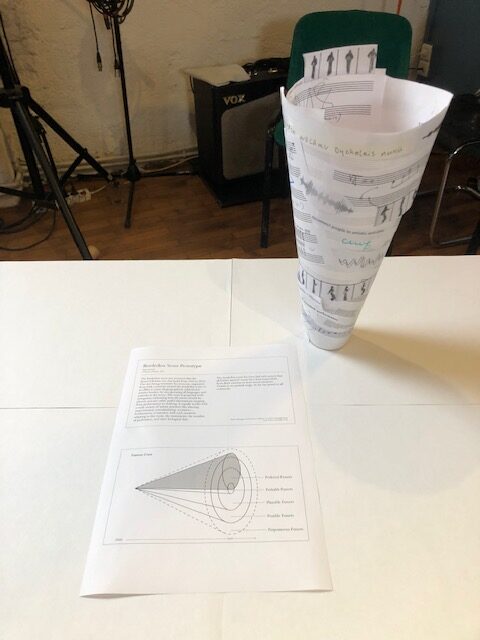
The borderless score was invented after the Russia-Ukraine war that lasted from 2022 to 2035. The war being traumatic for everyone, engineers from both countries created the borderless score in an effort to erase all geographical, cultural and artistic borders by incorporating all languages and artforms in the score. The score is projected with holograms, indicating how the music should be played, and any other useful information ranging from performance to clothing. It equally works with a wide variety of artistic practices like dancing, improvisation, soundpainting, recitation…. Furthermore, it interacts with each situation; adapting to the room, the instruments, the number of performers, and their biological data.
The borderless score has since had such success that all former musical scores have been transcribed, from Bach cantatas to most recent creations. Thanks to its optimal usage, its use has spread to all continents.




The Cone helps categorise future scenarios into four distinct buckets:
And lastly, preferred futures, the Holy Grail of speculative design. Preferred is where you place the scenarios you want to happen.
This is where most design practitioners operate. It describes what is likely to happen unless there is an extreme disturbance or turmoil.
Plausible refers to what could happen. It’s where scenario planning and speculation live.
At the edge of the cone is what might happen, even if it’s difficult to imagine.
Discussion
No feedback has been added yet
Share a Thought